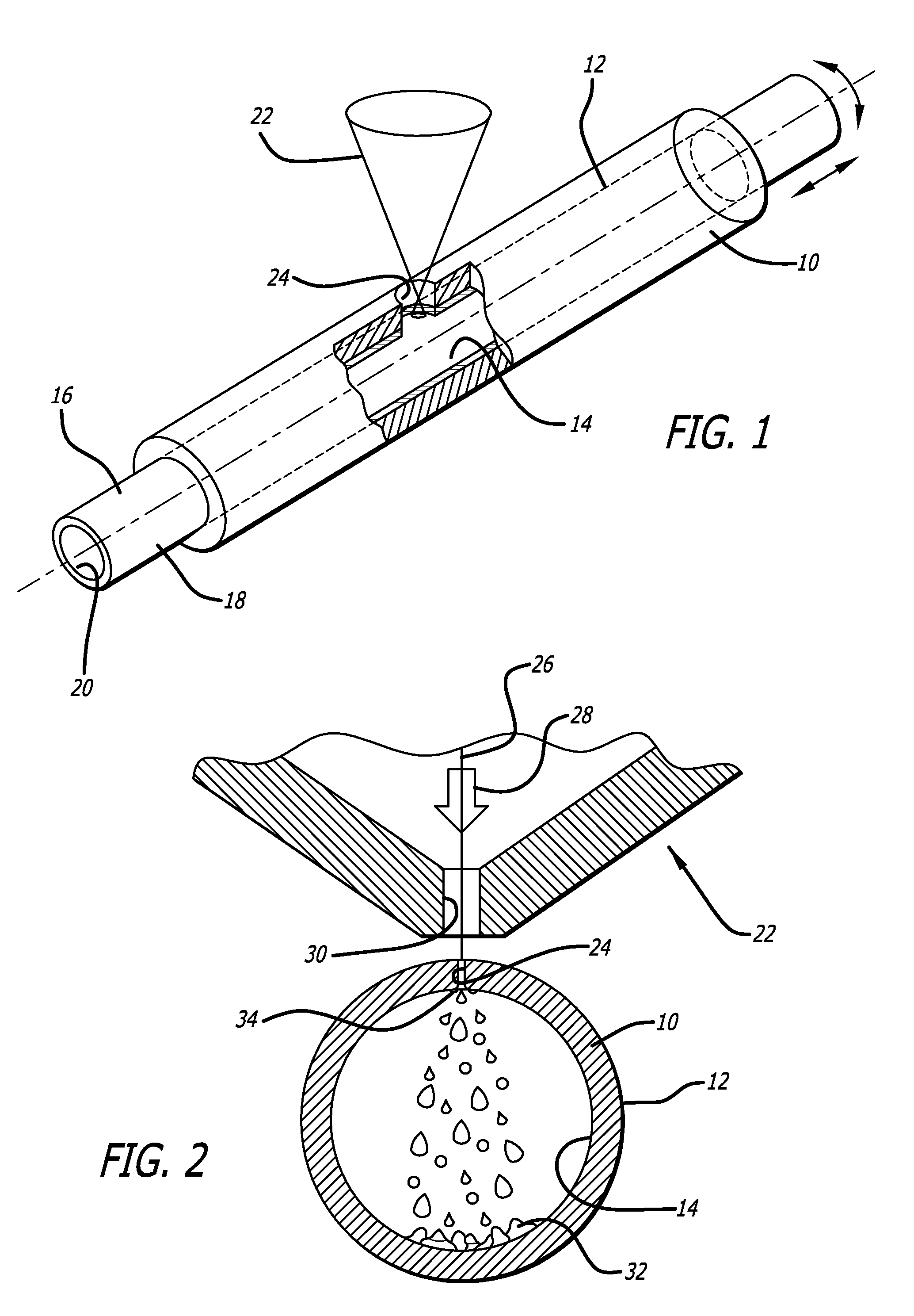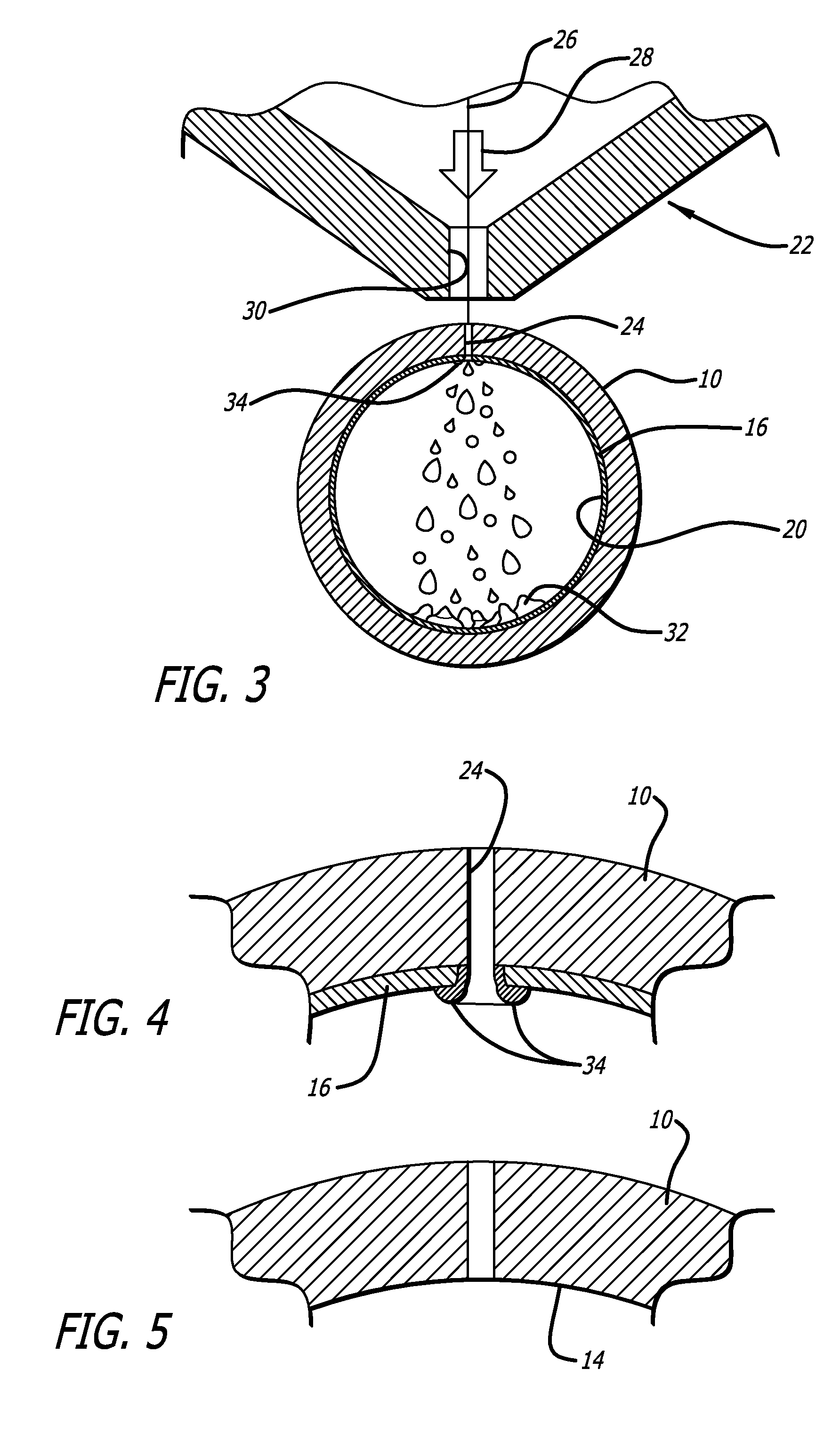Methods for laser cutting and processing tubing to make medical devices
- Summary
- Abstract
- Description
- Claims
- Application Information
AI Technical Summary
Benefits of technology
Problems solved by technology
Method used
Image
Examples
Embodiment Construction
[0052]Referring now to the drawing in which reference numerals represent like or corresponding elements across the drawings, and particularly FIGS. 1 and 3-5, a method of making a device from a hollow tubular member 10 is generally disclosed. The present invention relates generally to methods for laser cutting a length of hollow tubing, or as is it referred to herein a “tubular member,” to form a device, typically a medical device, such as a stent. While most workpieces formed in accordance with the present invention are in the form of a tubular member having a circular cross section, the tubular member could have a non-circular cross section as well. For example, the tubular member could have a rectangular, oval, square, and the like cross section, if desired. Moreover, the invention is not limited to forming stents and has a wide application with respect to other laser cut medical devices and non-medical products, particularly products which require a high precision pattern that i...
PUM
| Property | Measurement | Unit |
|---|---|---|
| Time | aaaaa | aaaaa |
| Energy | aaaaa | aaaaa |
Abstract
Description
Claims
Application Information
 Login to View More
Login to View More - R&D
- Intellectual Property
- Life Sciences
- Materials
- Tech Scout
- Unparalleled Data Quality
- Higher Quality Content
- 60% Fewer Hallucinations
Browse by: Latest US Patents, China's latest patents, Technical Efficacy Thesaurus, Application Domain, Technology Topic, Popular Technical Reports.
© 2025 PatSnap. All rights reserved.Legal|Privacy policy|Modern Slavery Act Transparency Statement|Sitemap|About US| Contact US: help@patsnap.com



